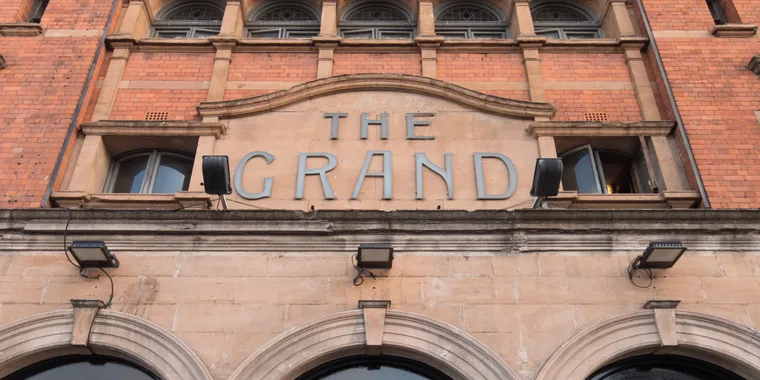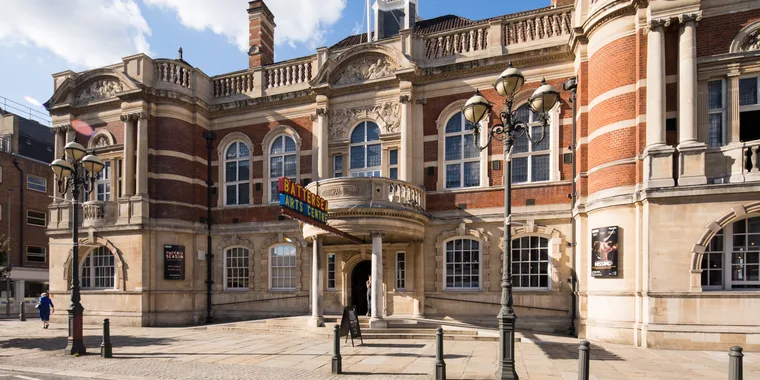You may already know Clapham Junction as one of South West London’s most popular shopping and entertainment destinations. But did you know just how much rich history and heritage there is on your doorstep?
Here are a few factual treats about historical landmarks you'll find at The Junction...
THE GRAND

The Clapham Grand, loved by Londoners as the ultimate party venue which hosts a nightclub, live gigs, films, bingo and events, was previously known as ‘The Grand Theatre’. Designed by Earnest Woodrow, the Grade II listed building with a capacity of 3,000 first opened in 1900 as "The New Grand Theatre of Varieties" and boasted a sizeable stage at 68 by 28 feet (20.7 by 8.5 m). It quickly became the go to music hall and variety venue for locals, featuring many well-known artistes of the time.
In 1927, the theatre was fitted for cinema use and became known as The Grand Theatre, showcasing both films and variety shows. But in 1950, The Grand went on to become a full-time cinema after it was purchased by the Essoldo Cinema.
In the years since, the venue has changed hands multiple times swapping between usage as a cinema and a bingo club, closing for 10 years before relaunching as a live music venue and then, later in life, almost becoming a Wetherspoons!
Today, the independently run venue hosts a multitude of entertainment and continues to attract famous acts from popular culture.
CLAPHAM JUNCTION

With an estimated 2,000 trains passing through every day, Clapham Junction is the UK’s busiest interchange station with between 100 and 180 trains per hour (except for the five hours after midnight).
Originally, the area which is home to Clapham Junction was rural and specialised in growing lavender, hence the street known as Lavender Hill to the east of the station. The old coach road from London to Guildford ran slightly south of the future station site, past The Falcon public house at the crossroads in the valley between St. John's Hill and Lavender Hill.
When the station was built in 1863, much of Battersea was industrial while Clapham, a mile south-east of this point, was very fashionable. In a bid to attract a middle- and upper-class clientele, the railway companies seized the non-industrial parish predicting that the slopes of Clapham's plateau would only reinforce this distinction, leading to a long-lasting misconception that the station is in Clapham!
BATTERSEA ARTS CENTRE

BAC is a local hub of entertainment, hosting a box office full of plays, comedies, events and talks. However, in its past, the building served quite a different purpose.
Historically, Battersea was situated in Surrey. The BAC building, designed by E. W. Mountford, opened in 1983, shortly after the Borough was transferred to the newly formed County of London, and functioned as Battersea Town Hall.
Many years later and, following proposals by London Borough of Wandsworth to demolish large parts of the building, a vociferous and ultimately successful campaign to save it was fought by the Victorian Society and Battersea Society leading to its Grade II* listed protected status in February 1970.
In March 2015, during a major programme of renovation works, the Grand Hall was severely damaged by fire. Fortunately, approximately 70% of the theatre, including the 200-capacity Council Chamber, the Scratch Bar and the Members Library, was saved from the fire and it remains the cultural heartbeat for arts and entertainment in The Junction area.
ARDING AND HOBBS

Following many years as home to Debenhams, the Arding & Hobbs building – at the heart of Clapham Junction – has recently undergone an extensive renovation project bringing together an engaging mix of retail and leisure uses and 90,000 sq ft of contemporary workspace.
Built in 1910 in an Edwardian Baroque style, the architect on the project was James Gibson. From the late 1970s the building was run by Allders until the group went into administration and the premises were subsequently broken up and sold.
The building is famously featured in a number of films and television programmes including the 1981 action-thriller Nighthawks, where the shop was bombed, and the 1993 Mr. Bean episode, Do-It-Yourself Mr. Bean. New romance pop fans may remember the building featuring in the video Life on Your Own by The Human League. Set in a future, apocalyptic London, lead singer – Philip Oakey – is the only person left alive and lives in Arding and Hobbs!
Archive
January 2026
December 2025
November 2025
September 2025
August 2025
July 2025
June 2025
May 2025
April 2025
March 2025
February 2025
January 2025
December 2024
November 2024
August 2024
July 2024
June 2024
May 2024
You might also like




